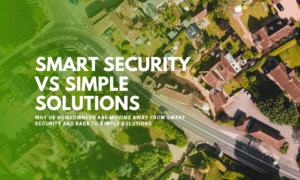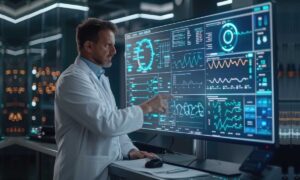In the interconnected digital age, the resilience of critical infrastructure has become paramount. The fundamental systems that support modern society from national power grids and transportation networks to healthcare systems and water treatment facilities are increasingly complex and interdependent. This complexity, combined with expanding digital transformation, has made these systems prime targets for both cyber and physical threats.
As a cybersecurity professional engaged in protecting these essential systems, Nurudeen Yemi Hussain has witnessed firsthand that traditional security approaches are no longer sufficient. His research and insights reveal that Artificial Intelligence (AI)-driven predictive analytics has emerged as a transformative solution, offering enhanced security and operational optimization for the infrastructure that supports our societies.
The Modern Threat Landscape
Today’s critical infrastructure faces an unprecedented barrage of sophisticated threats:
- Evolving Ransomware: Modern attacks employ military-grade encryption coupled with data exfiltration tactics, creating dual pressure on victims.
- Living Off the Land (LOTL) Techniques: Attackers increasingly use legitimate system tools and processes to evade traditional detection methods.
- Advanced Persistent Threats (APTs): Often state-sponsored, these attacks maintain a long-term presence in systems while exfiltrating sensitive data.
- Supply Chain Vulnerabilities: Compromises through third-party vendors and suppliers have become a preferred attack vector.
This complex threat environment highlights both the critical importance of skilled Blue Teams and the pressing need for more advanced, proactive defensive solutions. Nurudeen emphasizes that AI-driven analytics provides the capability necessary to meet these challenges.
The Transformative Power of AI-Driven Predictive Analytics
AI and machine learning technologies bring several revolutionary capabilities to critical infrastructure protection:
Real-Time Threat Identification
By leveraging neural networks to analyze massive datasets in real time, AI systems can:
- Detects subtle anomalies in network traffic patterns.
- Identify indicators of compromise that evade traditional tools.
- Recognize emerging threat patterns across distributed systems.
Operational Optimization
Beyond security, predictive analytics enables:
- Accurate forecasting of system demands and capacity requirements.
- Intelligent resource allocation to minimize waste.
- Predictive maintenance through equipment health monitoring.
Incident Response Enhancement
AI augments human security teams by:
- Automating initial triage of security alerts.
- Providing contextual recommendations for containment.
- Accelerating investigations through pattern recognition.
Practical Applications and Professional Observations
Nurudeen’s work in implementing these AI-driven solutions has demonstrated significant value across several key applications:
1) Enhanced Threat Detection and Response: Modern AI systems analyze diverse data sources including network logs, security alerts, and system telemetry to identify threats that conventional methods might miss. This proactive approach significantly improves organizational resilience against evolving cyber threats.
2) Optimized Resource Management: AI-driven analytics enables precise forecasting of infrastructure needs, ensuring optimal capacity while reducing operational waste—particularly valuable for energy and utility systems.
3) Disaster Preparedness and Resilience: By analyzing weather patterns, usage trends, and system interdependencies, AI models can predict and mitigate potential service disruptions from natural events.
4) Predictive Maintenance Systems: The ability to analyze equipment sensor data and predict failures before they occur has proven invaluable for minimizing downtime in critical facilities.
5) Supply Chain Security: AI tools help identify vulnerabilities and predict disruptions in the complex supply chains that support critical infrastructure operations.
Implementation Challenges and Considerations
While the benefits are clear, the successful adoption of AI-driven analytics requires addressing several key challenges:
Technical Considerations:
- Ensuring data quality and accessibility for AI systems.
- Managing model drift and performance degradation over time.
- Integrating with legacy infrastructure systems.
Organizational Factors:
- Bridging the skills gap between security and data science teams.
- Establishing clear governance and accountability frameworks.
- Managing change resistance from traditional security staff.
Ethical Imperatives:
- Maintaining robust data privacy protection.
- Preventing algorithmic bias in decision-making.
- Ensuring transparency in automated systems.
The Way Forward: Collaboration and Innovation
Maximizing AI’s potential for critical infrastructure protection requires:
- Cross-Sector Collaboration: Partnerships between government, industry, and academia to share knowledge and best practices.
- Workforce Development: Investment in training programs to build AI-literate security teams.
- Standardized Frameworks: Development of consistent guidelines for ethical, effective AI deployment.
- Continuous Innovation: Ongoing research to stay ahead of evolving threats.
Conclusion: Building a More Resilient Future
The integration of AI-driven predictive analytics represents a fundamental advancement in how we protect and optimize our critical infrastructure. These technologies offer powerful tools to address both current threats and future challenges, but their success depends on thoughtful implementation guided by operational experience and ethical principles.
As cybersecurity professionals, Nurudeen has the opportunity and responsibility to shape this transformation. By combining technical innovation with practical wisdom and developing solutions that not only enhance security but also improve the reliability and efficiency of the systems our societies depend upon every day.
Nurudeen’s work in this field continues to focus on implementing these advanced solutions in ways that are both effective and responsible, contributing to the ongoing evolution of critical infrastructure protection worldwide.



































